Colored glass is a pretty and handy material. It blends beauty, use, and toughness in building work. By adding metal oxides, ceramic frits, or special layers, it gets unique colors, clarity, and strength. The main types of coloured glass are tinted glass (lowers glare and heat), ceramic frit glass (stands up to weather and great for sun control), back-painted glass (nice but not as strong), and colored laminated glass (safe and stops UV rays). These options boost heat control, UV protection, and design choices for building outsides, insides, and safety-focused projects. Choosing the right type relies on the setting, safety rules, and artistic dreams. High-quality products like GLASVUE’s offerings mix charm and function.
What Is Colored Glass and Why Is It Special?
Colored glass isn’t just for show. It combines science, style, and usefulness. Whether you’re selecting materials for a tall building’s outer walls or indoor dividers, the types of coloured glass you pick affect beauty, energy savings, and long-lasting strength.
How Is Colored Glass Made Scientifically?
Colored glass gets its shade by mixing metal oxides or special pigments while it’s being made. These additions change how light passes through the glass. This creates different colors and levels of see-through. Sometimes, color comes from coatings like ceramic frits or back-painting. Other times, it’s built into layered glass.
How Has Colored Glass Changed Over Time?
Long ago, colored glass sparkled in stained glass windows and art pieces. Now, it’s made for both function and beauty in buildings. New methods, like screen printing and tempering, make colored glass not only lovely but also tough and weather-proof.
What Are the Different Types of Colored Glass?
The building world uses several unique types of coloured glass. Each type has a special job based on how it’s created.
What Makes Tinted Glass Different in Build and Use?
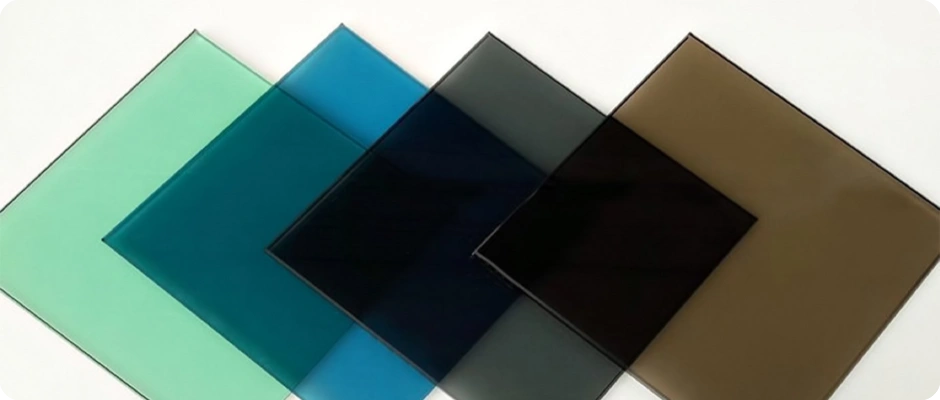
Tinted glass is made by mixing metal oxides, like iron or selenium, into melted glass. This gives a steady color across the whole sheet. It stays partly see-through. It cuts down glare and heat from the sun but still lets you see out. It’s great for windows and outer walls.
You can also use it for indoor parts like railings or dividers. It adds a bit of color without blocking light.
How Is Ceramic Frit Glass Made, and Why Is It So Tough?
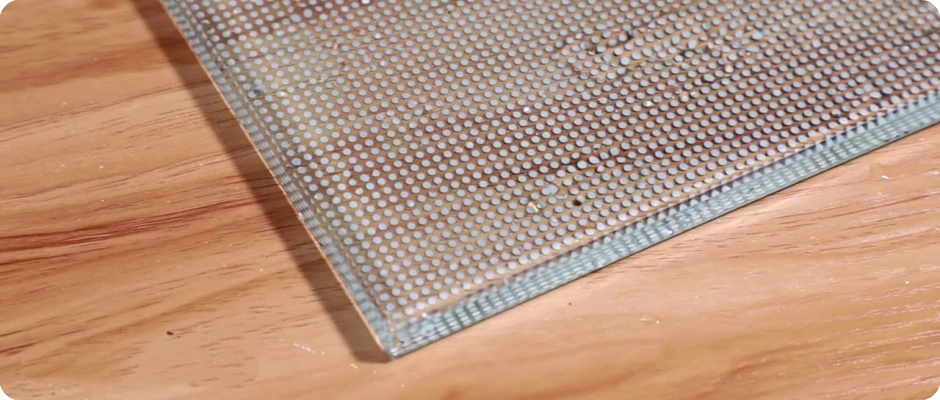
Ceramic frit glass, also called colored glaze glass, is created by putting layers of special ink on the glass surface. This is done with screen printing. Then, the glass is heated, baked, and tempered or semi-tempered. This makes a material that resists wear, acid, and alkali.
It has all the strengths of tempered or semi-tempered glass. You can also make it into colored glaze laminated glass. This boosts wind resistance and safety. You can choose how much ink covers the glass to control sun shading. For example, full coverage gives a score of about 0.32. Half coverage gives a Sc of about 0.66.
This makes ceramic frit glass perfect for structural glazing systems. It needs both beauty and heat control.
What Makes Back-Painted Glass Different from Ceramic Frit?
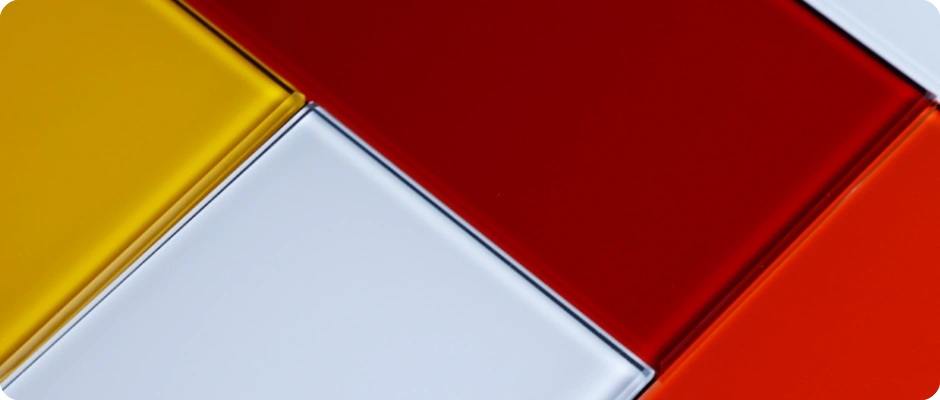
Back-painted glass is made by putting colored paint on the back of clear glass. Unlike ceramic frit, which bonds glaze to the surface at high heat, back-painted glass uses epoxy coatings. These are cured at lower temperatures. It’s very pretty for indoor uses like wall panels or cabinet covers. But it’s not as strong against the weather as ceramic frit.Therefore, back-painted glass is more often used indoors.
Why Pick Colored Laminated Glass for Safety Needs?
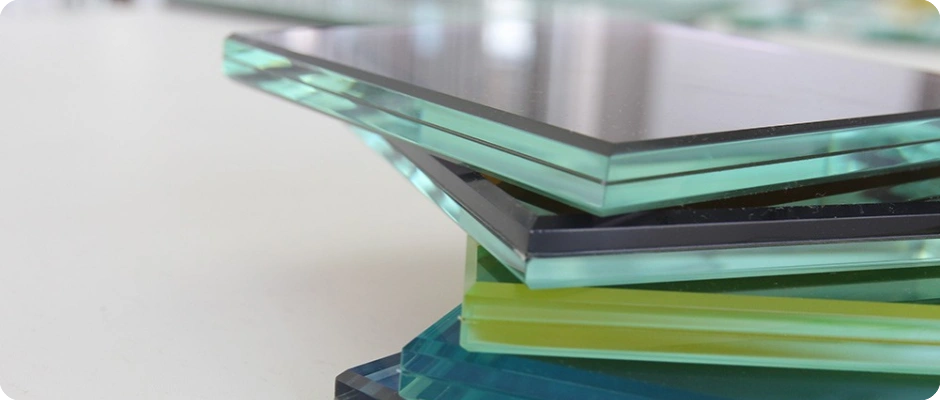
Colored laminated glass has a colored PVB layer between two glass sheets. By harmonizing the colors of PVB and glass, the laminated glass can exhibit the desired color. These sheets can be floated or tempered. The result is a product that’s both beautiful and very strong against impacts.
It’s great for reducing noise. It also blocks 99% of UV rays with its colored PVB film. You can choose the color you want. This makes it perfect for atriums, skylights, railings, or any place where safety and style matter.
What Practical Benefits Does Colored Glass Offer?
Besides looking nice, colored glass helps buildings work better in many ways.
How Does Colored Glass Help with Heat Control?
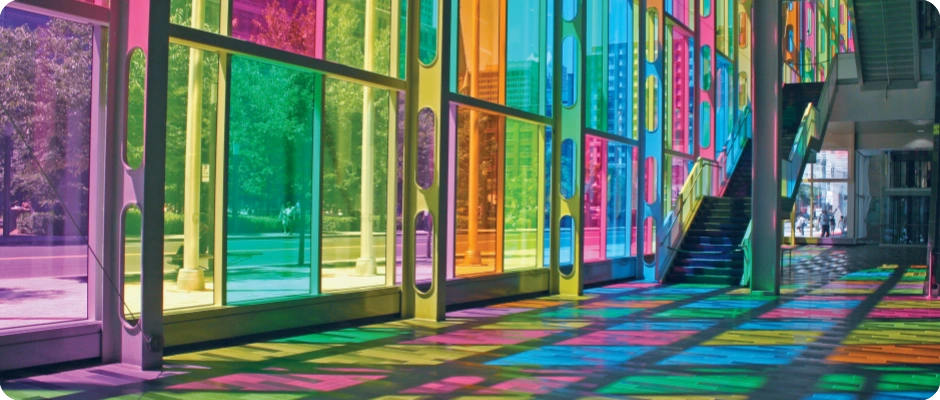
Tinted and ceramic frit glasses are excellent at managing heat from the sun. The sunshade coefficient (Sc) changes based on how much glaze covers the glass. This lets you adjust how much heat comes in. It fits your project’s needs.
This helps save energy. It lowers the need for air conditioning when it’s hot.
How Well Does It Block UV Rays?
The colored PVB film in laminated glass stops 99% of UV rays. This keeps indoor furniture from fading. It also protects people from long UV exposure. This is important for shops or homes with big glass areas.
Is Colored Glass Good for Outdoor Use Over Time?
How long it lasts depends on the type. Ceramic frit glass holds up better against the weather than back-painted glass. Laminated glass with PVB layers also stands up to moisture and temperature changes. This is because PVB is weather-resistant.
These features make colored glass last a long time, even in tough outdoor conditions.
Where Can You Use Colored Glass in Building Projects?
From outer walls to indoor dividers, colored glass has both practical and decorative uses in many places.
How Do Decorative Facades Get Better with Advanced Products?
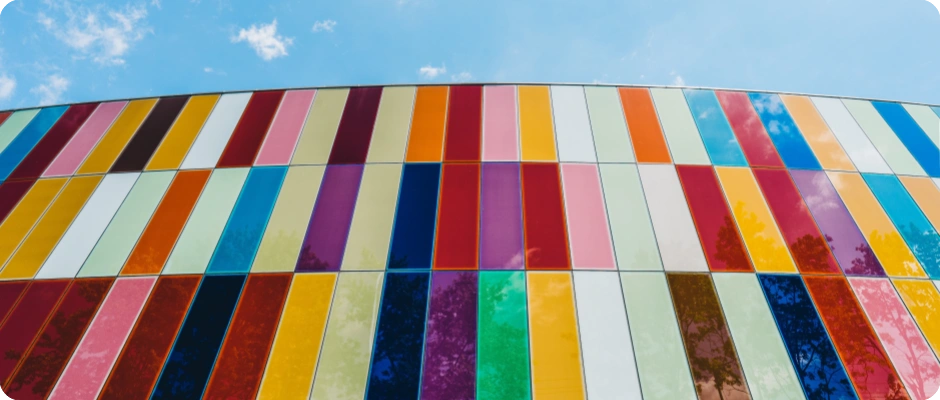
Glass isn’t just for letting in light. It can be a bold decorative feature. For outer walls needing insulation and beauty, insulated units with ceramic frit or colored laminated layers give heat control. They also offer bright, lasting colors that don’t fade.
Can Tinted Glass Work Well for Energy-Saving Windows?
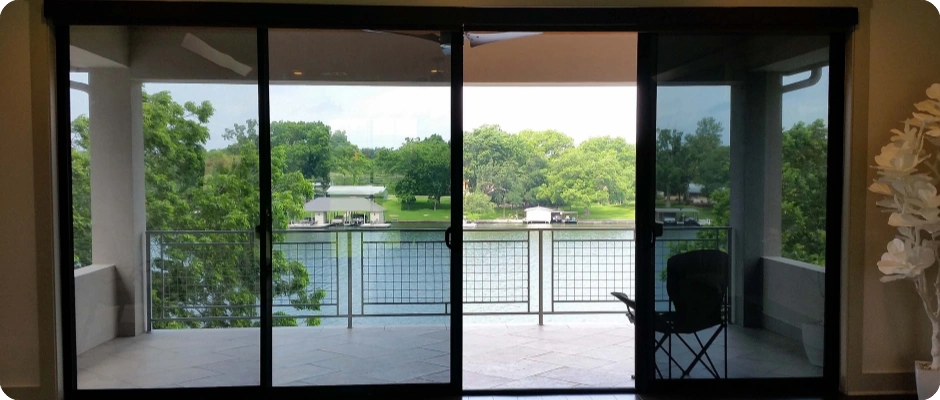
Yes, tinted glass reduces heat from the sun while staying clear. It’s perfect for office buildings that need to follow energy rules. It keeps natural light coming in. It balances comfort and visibility. This makes it a top pick for offices and schools.
What Role Does Colored Glass Play Indoors Beyond Looks?
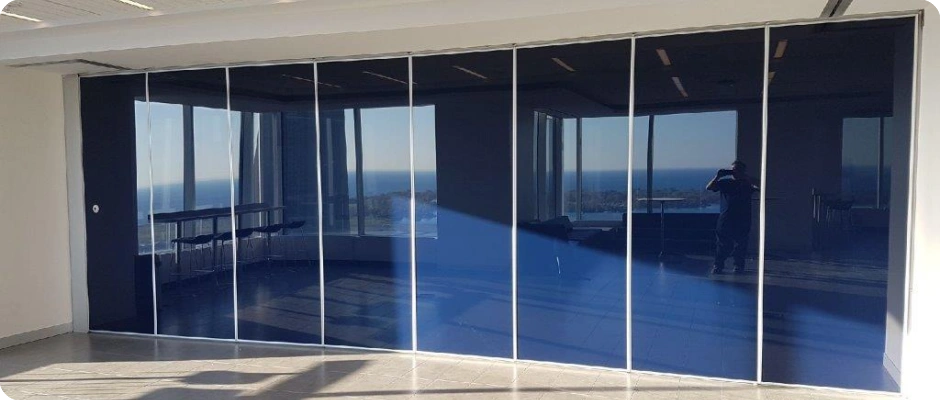
Interior designers often use digitally printed or patterned glass for dividers. These add privacy and act as art pieces. GLASVUE’s products have many color and pattern choices. They’re ideal for indoor dividers.
Also, decorative mirrors made with new methods resist rust. They make spaces feel bigger with reflection. They’re great for hotel lobbies or small shops.
Which Type Should You Pick for Your Project?
Choosing the right type of coloured glass means matching your project’s needs with your budget and creative ideas.
What Should Guide Your Choice?
Look at the big picture. Think about how the glass looks (bright colors or see-through). Consider what it needs to do (block UV or reduce noise). Think about where it’s installed (inside or outside). Check safety rules and cleaning needs. Also, think about costs over time.
If your project needs lots of customization, like color strength or pattern details, working with a skilled partner like GLASVUE is key.
Why Choose GLASVUE for Custom Solutions?
GLASVUE has spent years perfecting architectural glass. They don’t just make products. They create solutions built for your vision. From screen-printed ceramic frits improved by tempering to laminated panels that block 99% of UV rays, their products meet both design dreams and building rules worldwide.
FAQ
Q1: Can Back-Painted Glass Be Used Outside?
A: With special coatings, it’s possible. But back-painted glass usually isn’t strong enough for long-term outdoor use. Ceramic frit, fused to the surface at high heat, is much better for weather resistance.
Q2: What’s the Best Choice for Safety and Bright Color?
A: Colored laminated glass is tough because of its PVB layer. It also lets you fully customize colors. It’s perfect when safety and design are both important.
Q3: Do All Types of Coloured Glass Block UV Rays?
A: Not the same way. Laminated glass with special PVB films blocks up to 99% of UV rays. Regular tinted glass cuts down some UV but isn’t as good.



